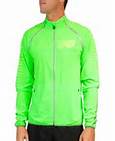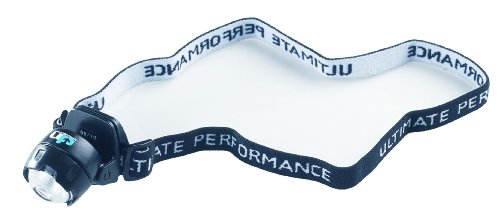What should runners wear at night?
This is a good question which I get asked a lot, and there are a lot of opinions as to what makes a runner “safe” at night. The best way to approach the question is to ask first “WHY do we need to wear something different for night running?”
Some runners go out dressed totally in black, and in normal daylight this is not a problem. However, at dusk or in the dark this renders a runner almost invisible; to pedestrians and dog-walkers sharing the path, to motorists and cyclists passing and even to other runners! Running at night is fraught with the danger of collision, the risk of sustaining (or even causing) severe injuries or accidents, or even distressing vulnerable people (elderly folk for example) and dog-walkers. The brain needs time to assess if it is seeing a cyclist, a walker or a runner; whether they are moving towards them or away; what speed they are travelling and whether or not they could be a threat, so it is important to be noticeable from a distance. Surprising a person (or worse – a dog!) or alarming a motorist is dangerous to you and to others, but is preventable if you make the effort to be clearly visible (and audible – don’t forget that a discreet cough or calling-out can help to stop someone straying into your path or being startled as you pass!).

Q: Is “High-Vis” Enough?
A: Firstly we should understand what “high-vis” means. This is generally the term applied to colours described as “fluorescent” – sharp colours with a radiant quality. The idea of high-vis clothing is to render the wearer noticeable (hence why emergency & rescue services, road maintenance crews and marshals wear it!). In daylight, low light or poor weather conditions high-vis is particularly useful as it stands out like nothing else, hence why it is such a useful aid to runners. Runners who set off in daylight but anticipate returning at dusk should find that high-vis clothing is perfectly adequate. HOWEVER, high-vis on it’s own has no benefit at all in the dark! Darkness renders colours obsolete – even high-vis ones – and it can actually be more effective to wear white than any other colour if you are going to be running in the dark! Colour is therefore not the only consideration for night-time running.
![]()
Q: So what else do I need?
A: If running in the dark you need to wear items with good reflective properties, so that light shines off you. Good running shoes usually have a reflective heel section, and a lot of running apparel has reflective panels on them too, but these areas – although effective to a degree – are usually very small and mainly on the back! They are not always adequate to help someone quickly assess what they are seeing (whether they are seeing another human or an animal; a cyclist, a walker or a runner; whether the object is moving towards them or away; what speed they are travelling and whether or not they could be a threat). It is interesting to note that Brooks are now incorporating “human relevent” reflective splashes on their jackets so that the shape and movement of a runner can be quickly identified without (in their opinion) the need for additional reflective bibs etc.
The safest option is to have something highly reflective on the upper torso such as a bib or vest with wide reflective bands across the whole width of the body – front AND back. Using reflective bands around the upper arm and lower leg is also useful as the movement it displays clearly shows other road users that you are running, and helps them judge how soon you will pass (or be passed). Reflectivity is so important that some running clubs actually have rules regarding the type and size of the reflective panels you must wear in order to deemed safe to run with them at night!
If running on a road with no pavement it is also very important to follow the Highway Code recommendation of running on the right-hand side so that you are FACING oncoming traffic (except on a tight bend of course!). Wearing a reflective band on the left arm (and even leg) so that your width and speed can be assessed by drivers/cyclists from a reasonable distance is very wise too.
Q: Is this all I need to consider?
A: There is just one more factor you might need to take into account. In unlit areas even the brightest high-vis and widest reflective panels will do little to make you stand out. Colours are – as we have already discussed – irrelevant in the dark, and reflective panels only help if there is light to reflect (from cars, street-lamps etc). If you are running along an unlit country lane or cycle track in the dark you will still be virtually invisible (even if you are in a white top with a large reflective bib over it!) unless you have a light source of your own; such as a head-lamp, a clip-on light or a LED strip. You may say “why does it matter if you are invisible for a while whilst there is no traffic around?” and I can only say that once you have tripped over an equally invisible dog, been sworn at by a startled pedestrian or knocked into a hedge by a cyclist with no lights on his bike you may rethink that question! Sadly we cannot make other path users visible to us, but we can at least make ourselves more visible to them in the hope that problems can be averted, so I personally recommend wearing white or high-vis AND reflective strips AND an LED/light of some kind! 
NB: If wearing lights/LEDS please don’t forget that white/yellow ones should always be on your front (forehead, torso, arms, waist or shoe-laces) and red ones should ALWAYS go on the back (back of head, back, waistband), so that others will know whether you are approaching or moving away!
Jo Randall
October 2013
